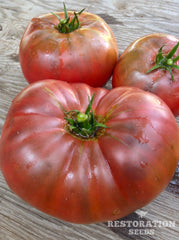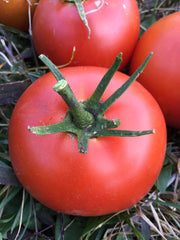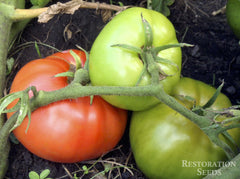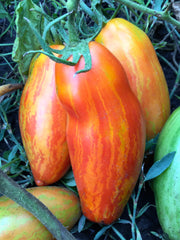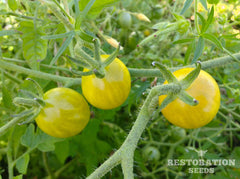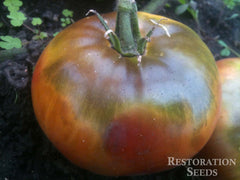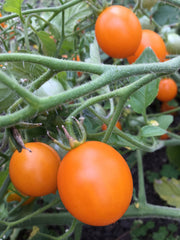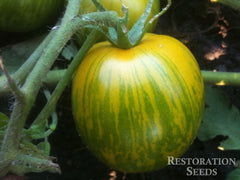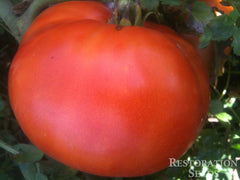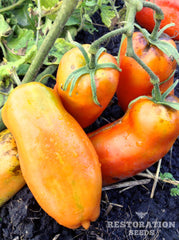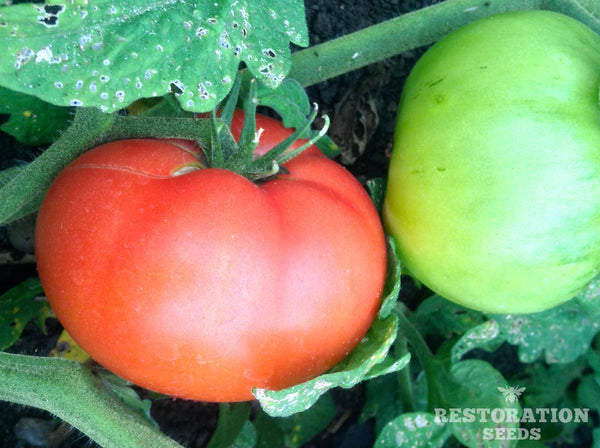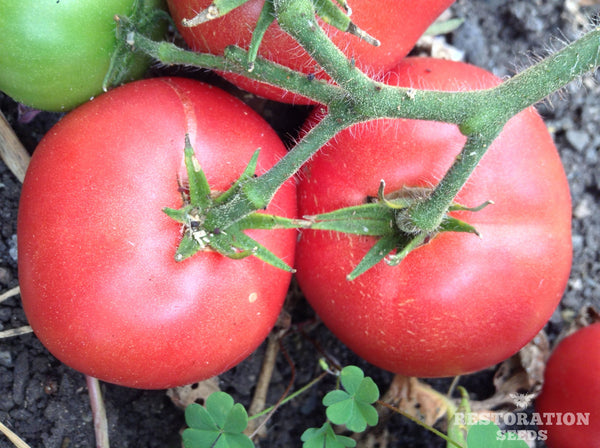Dwarf Champion
Solanum lycopersicum
HOW TO GROW TOMATO
Start indoors 6–8 weeks before last frost, plant out 1–2 weeks after last frost. Requires bottom heat for good germination. Pot up to 3-4” pots when first true leaves develop, bury to first leaves. Gradually harden off in full sun 1–2 weeks before transplanting after last frost. Transplant out stocky 8 to 10” tall plants. Apply super phosphate for high early yields and to avoid blossom-end rot. Too much nitrogen causes excessive vegetation. If fruit cracks, reduce watering. Indeterminate varieties are trellised, fruit ripens over an extended period. Prune to one leader pinching suckers in leaf axles every 7 to 10 days. Thirty days before last frost prune leaders to ripen remaining fruit. Determinate or bush varieties do not need pruning or trellising. Soil pH 4.3-6.6. Hardiness zones 4. Annual.
Days from maturity calculated from the date of transplant. Average 8,400 seeds per ounce. Federal germination standard: 75%. Usual seed life: 4-10 years. Isolation distance for seed saving: 75-150 feet.
Planting Depth 1/4”
Soil Temp. Germ. 70-85˚F
Days to Germ. 6-10
Plant Spacing 24”
Row Spacing 3-5’
Days To Maturity 80
Full Sun, Moist Well Drained
Days from maturity calculated from the date of transplant. Average 8,400 seeds per ounce. Federal germination standard: 75%. Usual seed life: 4-10 years. Isolation distance for seed saving: 75-150 feet.
Planting Depth 1/4”
Soil Temp. Germ. 70-85˚F
Days to Germ. 6-10
Plant Spacing 24”
Row Spacing 3-5’
Days To Maturity 80
Full Sun, Moist Well Drained
- 25 Seeds$4.25
- 250 Seeds$21.00
Three to six ounce red slicer, tangy sweet fruit. Compact dwarf plant. Parent stock source USDA Northeast Regional Plant Inventory Station, PI number 270180. A. W. Livingston described it as, ‘We make a specialty of this grand and very distinct variety ad have grown a number of acres every year since its introductio...
Three to six ounce red slicer, tangy sweet fruit. Compact dwarf plant. Parent stock source USDA Northeast Regional Plant Inventory Station, PI number 270180. A. W. Livingston described it as, ‘We make a specialty of this grand and very distinct variety ad have grown a number of acres every year since its introduction. A single plant of it was found some ten years ago (1886) in a field of our Acmes. It is well adapted for forcing in vegetable houses, because of its dwarf and compact growth, the plants growing stiff and upright, with stiff-jointed stems, the foliage of and unusually dark green color, thick and corrugated.’ Tags: Type: Determinate, Harvest: Mid, Color: Red, Size: Medium, Shape: Round, Specialty: Dwarf, Specialty: Slicer, Heritage: Heirloom, Season: Summer, Certification: Organic.
Learn More
Meet Your Farmer
We promote fair trade, organic practices and environmental responsibility throughout the Restoration Seeds supply chain. Below are the family farmers and seed suppliers who bring our open pollinated seeds to you.
Restoration Seeds
Certified Organic by OR Dept. of Ag.
Seed grower since 2009


Restoration Seeds is a farm-based seed company committed to selling seeds growers can save. We guarantee high quality seeds through our extensive variety trialing and plant breeding programs. We empower family farmers and home gardeners by offering 100% Open Pollinated seeds.
Reviews

